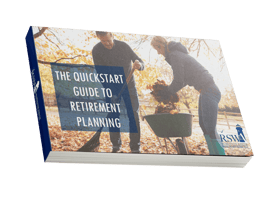We have been highlighting stronger than expected GDP growth in the United States recently, with the United States avoiding a recession. Equity markets are up, with companies reporting strong earnings. Compared to the rest of the developed world, the United States has been and is expected to continue to grow faster. Why US economy is powering ahead of Europe's | bbc.com
Looking specifically at the United States compared to the Euro Area (the group of 20 countries that adopted the Euro as their national currency), the United States economy is approaching double the size at $27.4 trillion compared to $15.5 trillion. What’s interesting is in 2008, the below chart shows almost parity between the two regions.

A few of the reasons for the difference in growth between the two regions since 2008 is the United States’s policy response to the Global Financial Crisis. The Euro Area was by debt and austerity measures, while the United States, with the U.S. Dollar as the world’s global reserve currency, had a greater ability to spend and continue to grow the economy to address the crisis. In addition, the United States has a flexible labor system and is more energy-independent than the Euro Area. The growth of the United States economy compared to the rest of the developed world may also explain the recent outperformance of domestic stock markets compared to international stock markets. Why Europe Is Behind in Recovering From the 2008 Financial Crisis | Observer
New Mexico Wildfires: Typically for a respite from the Southwest heat living in El Paso, we’d drive north into New Mexico. Either Cloudcroft or if we were adventurous and craving more New Mexico highway time, onto Ruidoso. A resort mountain town with amazing mountains and vistas, today the town is fully evacuated with two wildfires pressing against the town from the north and south. Sometimes even I exhibit compassion fatigue around wildfires and other overwhelming natural disasters but in areas where you have seen and experienced the beauty, it’s crushing. I remember hiking the region, coming across trails that had been completely burned out from wildfires years before but the scars of the landscape endure. Some of the trails, guidebooks said there weren’t any good views due to the tree cover but those were written before some of the devastating fires. 2 Fast-growing Wildfires Near Ruidoso, N.M. | NPR
This story by T.C. Boyle, writing about the Monticello fires and mudslides in 2018 is always something I call back to: After the Mudslides, an Absence in Montecito | The New Yorker
Juneteenth: This week marked the third observance of Juneteenth as a federal holiday. I read Ralph Ellison’s Invisible Man when I was in high school. A beautiful, but overwhelming novel for an 18-year-old to consider the African American experience in the United States. I was not fully capable of comprehending (and still not) the racial undertones and complexities. By my final year in high school, Ralph Ellison’s unfinished Juneteenth novel was posthumously published. The title and story centered around the Juneteenth celebration and a sermon. It’s incomprehensible to try to consider the emotion of breaking bondage, but for it to be delayed for two months after the end of the Civil War and the law of the land for over two years, it’s even more overwhelming. A beginner’s guide to celebrating Juneteenth | PBS News
Financial Planning/Investment Strategy Corner:
Sahm Rule: The U.S. labor economy has been resilient in the face of interest rate hikes and the Federal Reserve maintaining a higher for longer interest rate policy. One indicator of a potential recession is the Sahm Rule. Claudia Sahm developed the indicator that shows when the unemployment rate’s three-month average is half a percentage point higher than its 12-month low, the economy is in a recession. 'Sahm Rule' recession indicator | cnbc.com
Where are we now? After the May unemployment report, we are at 0.37. In the below chart, you can see the shades of gray representing recessions and the Sahm Rule Indicator rising before them:

A lot of data and leading indicators have not been reliable predictors based on distortions from the pandemic but some economists are seeing a slowdown in economic activity. This week, weaker retail sales pointed to a slowing consumer. Retail sales rise a meager 0.1% in May | AP News
Quick Hits:
- Horse only rocks out to Rock music: A head-banging horse rocks out to metal music | CBC.ca
- Since one in five Americans now nap on the job: How to Take the Perfect Nap | TIME
- Another comparison between the United States and Europe: Working from home and the U.S.-Europe divide | economist.com. American workers still work more hours in a year, however, with the advent of working from home, workers in the United States and Europe are now spending the same amount of time in the office.
- For the hikers: The Unending Allure Of The Highest Mountains (noemamag.com)
On Loss: My grandmother (affectionately known as Gaga to her grandchildren) passed away peacefully two weeks ago at age 99. She was a wonderful, independent, competitive person who lived through 11 decades and lived fully. She took up quilting in her 50s and taught many students the craft. One of her hand-quilted quilts: Somewhere In Time - Marjorie Haight Lydecker is featured at the National Quilt Museum in Paducah, KY. She was a treasure to everyone she met, with a great sense of humor.
This article taught me that when dealing with grief it is more akin to cleaning up broken glass: Grief is not a process with five stages. It is shattered glass | Psyche Ideas
Two of my favorite sayings from my grandmother: “It’s persistence, not patience” and “If at first you don’t succeed – try to hide your astonishment” – Gaga
Thank you for reading RSWA Financial Advisor Insights! We welcome feedback, and please forward this to a friend! Be well, take care, and stay safe!
